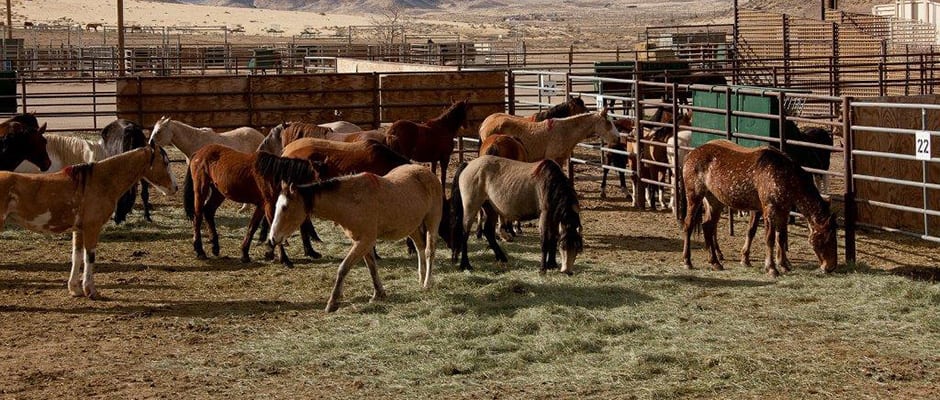Share this article
Horse and Burro Numbers Released in Tense Political Climate
The Bureau of Land Management (BLM) released new estimates on July 7 of free-range horse and burro populations in the western U.S. The BLM estimated there were 47,329 horses and 10,821 burros occupying western rangelands as of March 1, 2015.
These estimates stand in sharp contrast to the maximum number of horses and burros the BLM has determined rangelands can adequately support given the needs of native wildlife and other rangeland uses. This number, known as the Appropriate Management Level (AML), is 26,715 animals. Currently, the feral horse and burro population exceeds the AML by 31,435, and has the documented potential to continue increasing by 20% each year.
Alongside the BLM’s release of new population estimates was the announcement of 21 new research projects aimed at slowing horse and burro population growth. These projects will research implementation and behavioral impacts of fertility control vaccinations as well as spay and neuter programs.
Since the BLM was tasked with managing horses and burros under the Wild Free-Roaming Horses and Burros Act of 1971, the agency has received criticism from many different sides in regards to its handling of overpopulation. This newest announcement is no different.
Horse advocacy groups such as the Cloud Foundation have come out against the permanent sterilization research projects proposed by the BLM, claiming these practices would negatively impact genetic variation within herds. These groups have also long been opposed to the BLM and the Fish and Wildlife Service’s (FWS) position that the horses of the western U.S. descended from domesticated European horses brought to North America in the 1500s, rather than from wild horses that went extinct on the continent approximately 10,000 years ago.
The federal agencies’ positions were recently reaffirmed when a June 2014 petition from the advocacy groups Friends of Animals and the Cloud Foundation to list the horse as a threatened or endangered species under the Endangered Species Act was rejected by the FWS.
Many western governors as well as wildlife conservation and management groups like the National Horse and Burro Rangeland Management Coalition, which TWS currently helps lead, support the increased management of horses. These parties encourage the BLM to reduce free-range horse and burro populations to achieve population levels consistent with the AML in order to protect rangelands. However, the BLM has struggled to pay for off-range pastures and corrals for these animals, and people have become increasingly less willing to adopt them. As a result, the BLM has continually decreased the amount of horses and burros it has removed from the range; from over 8,000 removed in FY 2012 to less than 2,000 removed in FY 2014.
With the belief that the BLM has done an inadequate job of protecting western rangelands from the effects of horses and burros, Representative Chris Stewart (R-UT) and Senator Orrin Hatch (R-UT) have introduced H.R. 3172 and S. 1845 to the House and Senate. These identical bills would amend the Wild Free-Roaming Horses and Burros Act to allow management of horses and burros to be assumed by states or Indian territories on which they reside if requested by that state or territory’s governing body or legislature.
TWS has released a Position Statement on feral horses and burros in North America.
Additional Sources: Greenwire (July 28, 2015), BLM Wild Horses and Burros Webpage (July 28, 2015), National Horse & Burro Rangeland Management Coalition Congressional Testimony (March 25, 2015).
Header Image: Image Credit: BLM Nevada








